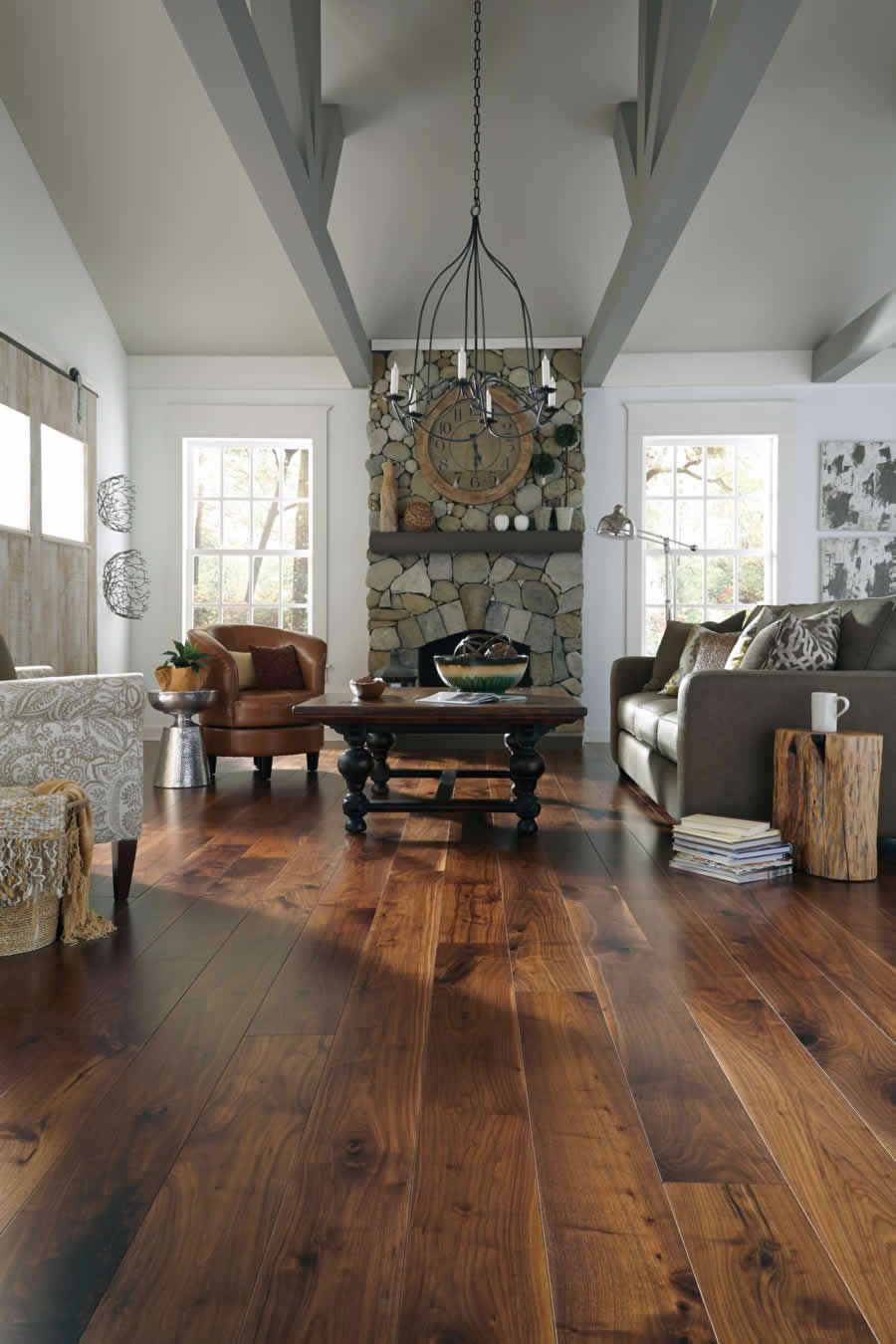“All the Rage” in Hardwood Flooring
After months of online browsing, you’ve found the perfect, wide plank hardwood flooring. Or so you think! You absolutely love the look. But how can you be sure it’s the right product for you? Ask the pros.
In order to make an informed, purchasing decision, Linda Jovanovich of the American Hardwood Information Center, suggests you do your research. “All hardwood flooring is not the same,” she says. “Consulting with the experts will help determine if your product of choice will perform well in your unique home or office environment, and in your part of the country. And a little extra due diligence will eliminate guess-work, and the pain of an improper product choice.”
Getting Started
The pros at Tennessee-based Mullican Flooring, www.mullicanflooring.com, offer this need-to-know information regarding the differences between solid and engineered hardwood flooring, and the appropriate applications for each.
Solid hardwood flooring is just that, solid wood milled to a ¾ inch thickness that can be installed only on a subfloor of wood, plywood, or oriented strand board. Because of its thickness, it can be sanded and refinished over several generations of use. As a natural product, it will expand and contract with the humidity changes in your home or office. To compensate for this movement, installers should leave an expansion gap between the wood flooring and the wall, and install baseboard moulding or quarter round to hide the extra space. Remember, solid hardwood flooring cannot be glued onto concrete, does not perform well in high-moisture areas, and can require up to 14 days of acclimation time.
Engineered hardwood flooring is not one solid piece of wood, but rather a cross-layer construction of five to nine layers of hardwood, bonded together using heat and pressure. As a result of this process, engineered flooring is less likely to be affected by changes in humidity, reducing expansion and contraction. In most cases, it can be sanded and refinished, however special care must be taken with the thinner profiles. And it can be glued onto concrete, making it an appropriate choice for all levels – upstairs, ground level and basements – and a great choice for what’s all the rage these days, wide plank flooring!
Another Great Resource
The flooring professionals at the National Wood Flooring Association (NWFA), www.nwfa.org, concur. Requests for wider boards, random widths, and rustic species full of character and color continue to dominate the hardwood flooring marketplace.
“It’s a significant trend that will likely continue for quite some time,” says Brett Miller, NWFA Vice President of Education and Certification. “And it is a trend that can present certain challenges, especially if the installation is subpar and the end-user is uninformed.”
So, act wisely and be in-the-know. Engaging the services of professional, certified flooring installers will ensure that your gorgeous flooring will stay that way. These knowledgeable craftsmen understand the importance of acclimation and the control of temperature and relative humidity. They in turn will pass that information on to you, the end-user. An educated customer is a happy one.

8-inch Satin Finished Character Walnut Flooring by Shannon & Waterman.
More on What’s Trending
Other trends being followed by NWFA member companies, especially custom, wide plank flooring manufacturer, Shannon & Waterman, www.shannonwaterman.com, include a continuation of gray stains and finishes, texturing of wood versus smooth finishes, utilizing random widths in a single installation, a preference for rustic species, selecting boards based on significant character inclusions like knot holes and saw blade marks, and a return to oil finishes.
It’s spicy. It’s classy. And it’s all the rage!



